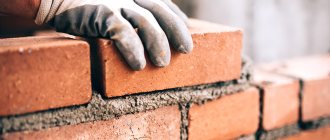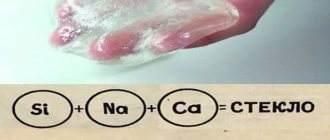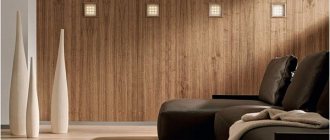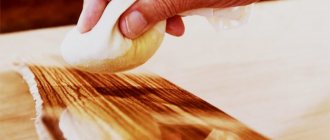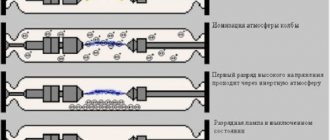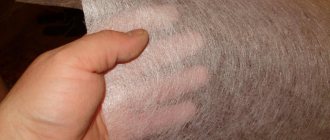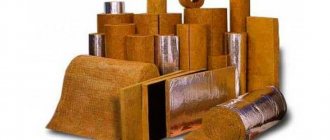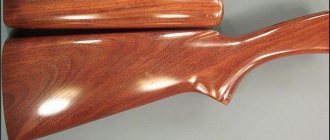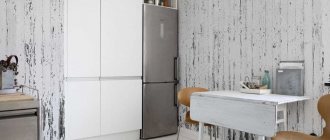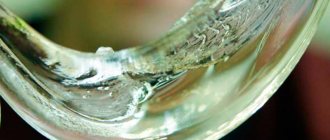New products with interesting properties often appear on the building materials market. Liquid wood - a German invention. It looks like both a natural analogue and plastic at the same time. But the characteristics at the base have been improved, and the shortcomings of the bases have been reduced to almost zero. It is worth studying in more detail such structures, which are also called DCP - wood-polymer composite.
Specifications
Wood pulp is simple in composition, suitable as a raw material for furniture decoration, and has characteristics comparable to natural wood. Products made from paste are a worthy alternative to expensive wood products. The pulp has technical characteristics, which are summarized in the table:
Table. Technical characteristics of wood pulp
| Technical data | Description | Notes |
| Mass composition | 98% wood dust | In some cases, dyes are added |
| Polymer glue | ||
| Vegetable oils | ||
| Appearance | Dense, homogeneous mass | Brick color |
| Dry residue | Approximately 60% | |
| Application | Production of types of carved decor | Ornament; molding; socket; corner elements; brackets; sculptural bas-relief; cartouche |
| Ecology | Pure product without harmful impurities | Does not cause allergies |
| Packaging | 24.2 / 26 kg | In a tightly closed container |
| Storage | Temperature up to 20 °C | In the cool |
| Best before date | 1 year | Subject to storage conditions |
Twinson
This is a unique composite material made of PVC and wood, which has literally turned the idea of the possibilities of a new type of finishing materials upside down. Twinson is an excellent alternative to wood materials. With its help you can solve non-standard problems. Its low consumption, strength and moisture resistance, excellent appearance - all this is TWINSON paint. You can use it equally successfully for both indoor and outdoor work. Twinson's range of decking paints is constantly expanding.
Areas of application of wood flour in industry
Due to its unique properties, wood flour is widely used in various industries, and due to the rapid development of technology, the range of uses of wood flour is constantly expanding.
Wood flour is used as a filler and auxiliary material for the production of phenolic plastics, linoleum, adhesives, filter substances, composite materials, etc.
Let's look at the areas of application of wood flour in more detail:
In the production of phenolic plastics
Wood flour acts as an organic filler in the production of phenolic plastics. Phenolic is one of the most common and cheapest types of plastic. Due to their durability and wear resistance, phenolic plastics can be used in conditions of high temperature and humidity. Phenolic plastics are used in various industries: in shipbuilding, construction, in the production of equipment, furniture, interior parts, in the automotive industry, in aviation.
In the production of pigment titanium dioxide
Pigment titanium dioxide is the main white pigment in paints and varnishes. Wood flour is involved in the production of this pigment during the filtration process.
In the production of linoleum
Wood flour is the main component of alkyd linoleum, produced in the form of continuous sheets or paths.
Composed of explosives
Wood flour is used as a component of raw materials for the production of various explosives. It is an absorber and prevents untimely explosion of substances during transportation and shocks.
In foundry
Wood flour is used as an additive in the production of steels and iron alloys
For the production of adhesives, adhesive mastics, sealants
Wood flour is included in adhesive compositions, improving their strength and other performance characteristics, and also allowing you to save on expensive synthetic resins.
As a cleaning agent
Wood flour is used as a cleaning agent in the production of leather and fur, and for grinding, polishing and cleaning a variety of metal products. Due to its absorbent properties, it is used to clean roads and reservoirs from oil pollution.
In agriculture
In agriculture, wood flour is used for pelleting seeds, as a leavening agent for poor soil, and as a substrate for growing mushrooms. Wood flour is used to make bedding for raising farm animals. In addition, wood flour is added to some feeds.
In the production of building materials and mixtures
Wood flour is included in plastering and finishing construction mixtures and is added to concrete, drywall, and road surface materials.
As part of a wood-polymer composite
A new and popular area for using wood flour is the production of thermoplastic wood-polymer composite material (WPC). The percentage of wood flour content in it can reach 80%. Wood-polymer composite combines the practicality of polymer materials and the advantages of natural wood. WPC is actively used in construction, interior design, finishing of buildings, cars, etc. Thanks to the high percentage of wood flour, WPC retains the color, texture and thermal conductivity of natural wood.
Making composite wood yourself
You can make a liquid tree with your own hands at home. This type of WPC is suitable for any restoration work, in particular for filling cracks and holes in furniture, eliminating defects in wooden or laminate flooring, etc.
For manufacturing you will need fine sawdust and PVA glue, which are thoroughly mixed.
The recommended ratio for the components should be 70 parts sawdust and 30 parts glue. To give the products the desired shade, you should add enamel of the required color.
Composite wood (liquid wood) is distinguished by a simple and accessible installation technology for everyone, based on installing sheathing or joists (in the case of floor construction), and fastening elements to them using clamps or clips, additionally secured with screws or nails.
Natural wood, which has received a second life by adding polymer to ordinary waste from the wood processing industry, has become a breakthrough in recent years.
With good quality production, proper installation and proper care, a surface finished with liquid wood will serve its owners faithfully until it gets boring or goes out of fashion.
Liquid wood (composite wood), video
Types of composite
Liquid wood is distinguished:
- Solid, withstanding enormous loads and mechanical damage. This type of liquid wood floor is ideal for rooms with high traffic loads.
- Hollow, characterized by low weight.
It should be noted that the type of wood composite joint can also be different:
- With seams that require installation of boards with a gap of 3-5 mm. Fastening of products is carried out using metal or plastic clamps.
- Seamless, creating a solid monolithic surface. The planks are attached using self-tapping screws.
Of no less interest to the consumer should be a type of anti-slip coating, which can be:
- Treated with metal brushes, due to which the material ages artificially;
- Sanded, that is, treated with emery or abrasive mesh;
- Embossed;
- Co-extrusion, based on the creation of the front part of the planks from a heavy-duty composition. Structuring of the material occurs during direct extrusion of products.
- Co-extrusion with deep embossing, allowing you to recreate the texture of valuable wood species.
How to make beds from WPC with your own hands
There are two main ways to make warm beds using wood-polymer composite. It all depends on what kind of material is available:
- For WPC with a high content of wood filler, in the range of 60-70%. In appearance and characteristics, the board cannot be distinguished from real profiled lumber. In this case, warm beds are made in the same way as from ordinary coniferous boards;
- Polypropylene or polyvinyl chloride DPS with a wood filler content of 40-50%. This is the so-called terrace board, in appearance it is practically no different from natural one, but to the touch it is like ordinary plastic.
Warm beds can be made from decking boards using standard turning corners, Holshof elements, or installed using self-tapping screws on metal racks made of profiled pipe.
Tools and materials
To work, you will need the same set of tools as in the case of making warm beds from ordinary coniferous slats and beams. The classic WPC board does not require any additional types of finishing, painting or varnishing. The entire process comes down to assembling the parts.
The list will include:
- Construction tape, tapping paint cord, if the length of future warm beds is more than 2 m;
- Carpenter's square, pair of clamps;
- Screwdriver or electric drill;
- Hand saw for wood.
In addition, depending on the method of assembling the beds, their height and method of fixation on the ground, you will need rotating connecting corners, a 60x20 mm steel pipe or ready-made Holshof corner elements.
Standard fencing for beds made of WPC
The easiest and fastest way to make a planting fence is using ready-made connecting corners. To do this, you can use a rotary unit, as in the photo.
Swivel Corner Connectors
The second element of the garden bed fencing will be a 250×20 mm WPC board.
You just need to insert the WPC board into the corner of the bed box
All that is needed to assemble the fence is to cut the required number of WPC boards to size using a hand saw, attach the turning corners to the ends and install the finished bed on the ground.
The design of the connecting elements allows you to additionally install a mesh - a lattice protecting decorative plantings, or mount a second row of WPC.
How to make raised beds from WPC
The use of plastic turning corners ensures very simple assembly and a nice appearance for WPC beds. But their strength is low, and at best they can be used for a single-row body. According to reviews from summer residents, high beds made of WPC are best made using metal connecting brackets, for example, elements as in the photo.
Connecting with brackets is no more difficult than with rotary units
Essentially, these are two sections of rectangular profiled pipe, welded at an angle of 90° to each other. Such parts can be purchased ready-made for a 30x300 mm board or made yourself. Moreover, apart from welding and a clamp, no additional equipment is required.
On welded brackets it is possible to assemble high beds made of WPC of almost unlimited height. In practice, they are made with a box wall height of up to one meter.
Warm beds made of WPC
For summer residents and gardeners who know how to use a drill, a hand saw, and a measuring tool, we can advise you to make full-fledged, almost eternal warm beds only from WPC and a one and a half meter section of profiled pipe. The result is a very durable, reliable and no less attractive design.
First of all, it is necessary to cut blanks from WPC boards according to the pre-measured dimensions of the bed on the site
Each wall of the bed will be assembled from two 250x20 mm boards. To do this, we lay a pair of WPC on a pre-cut rack, drill holes for self-tapping screws and attach the wood-polymer walls to the metal pipe.
Drill and screw in self-tapping screws
Next, you need to assemble the finished walls into one box. The boards can be held by hand if you have an assistant, or you can use standard carpentry clamps for fixation.
The length of each metal stand is 15-20 cm greater than the height of the wall, this is enough to secure the box on the soft soil of warm beds.
Choosing wood-plastic products – making a wise purchase
The cost of the described composite depends on what polymer is used for its manufacture. If a manufacturer makes WPC from polyethylene raw materials, the price of the finished product will be minimal. But it is worth noting that such products are not UV resistant. But polyvinyl chloride polymers give wood plastic high resistance to fire and UV rays, and also make it very durable. Products made from WPC (in particular, decking) are usually divided into seamless and with seams. The first ones are mounted without clamps, screws and other hardware. Such boards simply adhere to each other, forming a strong, continuous surface.
Wood plastic material
But to install products with seams, it is necessary to use plastic or metal fasteners (most often, clamps act as such). WPC slabs or boards can be hollow or solid. For arranging verandas of private houses, it is better to use products with voids. They are lightweight and very easy to work with on your own. Solid wood-plastic, which is able to withstand significant loads, is more suitable for installation in public places (embankments, summer restaurants and bars, ship decks), where there is a high traffic flow of people.
When choosing WPC boards, pay attention to the thickness of their walls (it should be at least 4–5 mm), the height of the stiffening ribs (the higher they are, the more reliable the products will be in operation) and their number (the more ribs, the stronger the result). design).
You should also choose the width of your composite panels and boards wisely. One point needs to be understood here. The wider the products you buy, the easier it will be for you to work with them, because installing such boards will require significantly fewer fasteners. Some more useful tips for you. Check with the sellers what sawdust the WPC was made from. If the manufacturer used coniferous wood for these purposes, it is better to look for another material. Why? For the reason that coniferous-based composites are considered fire hazardous. And the strength characteristics of such products leave much to be desired. WPCs based on waste from processing deciduous trees do not have these disadvantages.
We recommend: Installing a sandwich chimney with your own hands: instructions and rules for installing sandwich chimney pipes
In cases where light veins or areas are clearly visible on composite panels (boards, slabs), the operational reliability of the products will be low. Most likely, the manufacturer used wood flour of low quality, and, moreover, poorly ground. Such panels, as a rule, have low water resistance. They cannot be used outdoors. The insufficient quality of the WPC is also indicated by the presence of a non-uniform color on its surface (stains, clearly visible shade transitions).
The process of making wood paste at home
You can knead wood pulp yourself at home. To make pulp for independent work, you need to have the tools and materials according to the list:
- the volume of dust and chips required for the composition;
- PVA glue;
- medium-sized wooden or plastic rolling pin;
- silicone molds, the pulp is better released from them, they are easier to wash;
- container for mixing components
The paste manufacturing technology consists of:
- To ensure the required volume of wood shavings:
- at the sawmill;
- plan with your own hands;
- buy in a store;
- use compressed shavings pellets for the cat litter box
- Use as a polymer to create the viscosity of the mass, which will then harden:
- PVA glue;
- industrial nitro composition for pulp.
- The process for making a mixed mass is as follows:
- Pour ground shavings into a container sufficient in volume and pour in glue, maintaining the proportion: 80% to 20%.
- Mix everything until a homogeneous, dense mass lags behind the hand. More ground shavings are added to the liquid composition, bringing the paste to the state of plasticine.
You don’t need to be a professional; it’s enough to have skillful hands to mix a simple composition of shavings and glue. From the resulting wood pulp, similar to plasticine, mold your favorite elements to decorate things and transform the design of your apartment.
What is liquid wood, its composition and production
Today you can increasingly hear that ordinary building and finishing materials can be in a liquid state. Often it's not exactly what you think. There is no need to rush to stock up on buckets and other containers, as these materials will only remain in this state for a short time. This, for example, is evidenced by the composition of liquid wood. Once you study it, you will understand what it is and how to work with it. In fact, this is a unique mixture that includes:
- Wood flour, which you can make yourself, but it is better to buy it.
- Other organic components such as husks, straw and hemp. Their presence, like the assortment, by the way, does not play a special role.
- The polymer part of the material, and to give it strength and a unique design, thermoplastic polymer is most often used. Also, molten polyethylene or polypropylene can be used as a connecting element.
- Additives that significantly improve performance characteristics.
It is known that wood-based materials, no matter how durable they are, are often afraid of temperature changes and insect pests. The main difference between liquid wood furniture is the absence of photophobia; it is also not afraid of mechanical and chemical damage. Such furniture belongs in the kitchen and even in the sauna, where it is always “warm” and damp.
Liquid tree near the pool - beautiful and safe
Most building materials, including wood and materials containing it, are difficult to make at home, and even impossible, which cannot be said about our subject. You can set up the production of liquid wood at your dacha or in the garage, although the best qualities are demonstrated by finished products obtained in an industrial enterprise. We will tell you in a nutshell how this is done, and you decide for yourself, “to be or not to be.”
The essence of the process is that the main components that we listed above are mixed in a special container. After this, the contents are heated to high temperatures, resulting in a connection at the molecular level. The result is a very durable material that is hard to resist the temptation to buy. Yes, you can give it any shape by squeezing it under high pressure through special molds. Slow cooling will help strengthen the achieved result.
DIY liquid tree
The main qualities of “liquid wood”:
a product that does not contain harmful substances;- lack of formaldehyde;
- do not respond to mechanical and physical influences;
- this material can be used in any climate. As in the north, so in the south;
- not flammable;
- thanks to various additives, no mold or mildew is afraid of it;
- easy to use, does not require varnishing or painting;
- does not dry out, is moisture resistant;
- has a smooth surface that can be easily washed with running water;
- does not harm the environment;
- does not lose its natural color over time.
Is it possible to make composite material yourself?
Now comes the fun part. If you wish, you can easily make a worthy analogue of WPC with your own hands at home. Homemade wood-plastic is made from sawdust and ordinary PVA glue and is used to restore parquet boards, repair laminate flooring, and restore other wooden coverings. It can also be used for the manufacture of rough flooring in gazebos and auxiliary premises.
WPC is made by hand according to the following scheme:
- Grind sawdust in a coffee grinder or hand-held kitchen mill until it becomes dusty.
- Add PVA glue to the crushed sawdust (proportions - 30 to 70%) and mix these components until you get a mixture with the consistency of a paste.
- Pour dye into the prepared composition (it is recommended to use additives used for ordinary water-based paint). Mix everything again.
So you have made homemade wood-plastic! Feel free to fill holes in wooden floors with this mixture. After the WPC has hardened, the restored area will only need to be sanded using fine-grain sandpaper. The composition, made with your own hands, can also be used for arranging new floors. Assemble the formwork from boards, make home-made WPC in the required quantities and fill the formwork structure with it. The thickness of homemade boards in this case should be at least 5 cm. Go for it!
Benefits of Wood Pulp
Thanks to favorable competition with products made from natural materials, wood paste has undeniable advantages, which allows it to enjoy growing popularity. These include:
- Consists of environmentally friendly raw materials without harmful impurities. The use of finished products does not cause an allergic reaction.
- The products can withstand temperature changes over a wide range from -10 to 40 degrees.
- All products are protected with a varnish coating and are resistant to high humidity.
- Unused excess paste is reanimated with acetone.
- After drying, the products become hard, they are sanded, carved, planed, and varnished.
- The consistency of the finished paste is soft and can be easily converted into the desired shape.
- Products made from pulp are durable and will last for several generations of users.
- The price-quality ratio is much more favorable for products made from pulp than for parts made from natural wood.
- During production there is no need to purchase expensive equipment and drying systems. All work can be done on your own at home.
- The mixture is used to cover wooden surfaces of different shapes and irregularities, giving them the appearance of wood.
Basic properties of wood flour
Wood flour usually includes crushed wood with a particle size of less than 1.2 mm.
The color of wood flour depends on the type of wood and can range from light straw to dark brown.
The specific fractional composition of wood flour supplied depends on the grinding method and particle classification (centrifugal, sieve, etc.). GOST 16361-87 defines the following grades of wood flour, see Table 1:
Table 1. Wood flour brands
The standard does not directly provide requirements for the size of flour particles. They are established in tabular form in the form of indicators of the results of sieve analysis, see table. 2
Table 2. Approximate particle sizes of wood flour
| brand of flour | residue on a sieve with mesh clearance, mm, no more,% | approx. particle size is mainly |
| less than 0.13 mm | ||
| less than 0.13mm | ||
| 0.125 mm - 11% | less than 0.17 mm | |
| 0.125 mm - 18% | less than 0.17 mm | |
| less than 0.24 mm | ||
| 0.25 mm - 3.5% | 0.355 mm - 0.2% | less than 0.25 mm |
| 0.063 mm - 60% | 0.18mm - from 5 to 18% | less than 0.25 mm |
| 0.25 mm - 45% | less than 0.5 mm | |
| less than 1.2 mm |
Humidity according to the standard is 8%. Some applications may require different humidity levels. For example, when used in the production of thermoplastic WPC, flour moisture content should be less than 1%.
The bulk density of wood flour depends on many factors (humidity, particle sizes and shapes, wood type) and is in the range of 100 - 220 kg/m3; the standard value for flour grades 120 - 180 is 100 - 140 kg/m3.
Wood undergoes virtually no chemical transformations during the production of wood flour. Therefore, the chemical composition of wood flour corresponds to the composition of the original wood, and wood flour can be considered a completely natural material.
Wood flour has pronounced sorbing properties, as well as thixotropic qualities (smears, but does not flow). Wood flour ignites in air at temperatures above 200 degrees C. Self-ignition temperature of the aerosol, 430 °C. The lower concentration limit of explosion of the wood flour aerosol is 11.2 g/m3. It largely depends on its dispersion, ash content and humidity. Wet or oiled wood flour, like sawdust, rags, grain, etc. materials capable of spontaneous combustion.
GOST 16361-87 also establishes requirements for ash content, the presence of impurities, acidity of wood flour, and some others.
Wood flour easily absorbs moisture, so when supplied it is packaged in thick paper or plastic bags, including bags. “big bags”, plastic containers (buckets, barrels, containers). Foreign flour and flour-based products, especially those intended for retail sale, often have artistic, colorful packaging.
For transportation, small packages are combined into a transport space on wooden pallets and transported. covered transport. A standard wagon, for example, can hold about 20 tons of bagged flour, and a standard 40-foot container can hold about 16 tons of wood flour. Therefore, it cannot be assumed that wood flour is difficult to transport over long distances. Another thing is that flour is a cheap product, but this is only its advantage, not a disadvantage.
For regular transportation of bulk flour, special vehicles and wagons - flour trucks - can be used.
If necessary, wood flour can be compacted by briquetting or granulating.
Kaowa SEMENTOL
Another interesting coating is Kaowa paint, which is called liquid wood. It is capable of creating the structure of elite wood species on any surface. This paint can be used for interior and exterior applications. “Liquid wood” paint (customer reviews indicate this) tolerates temperature changes well and is not afraid of moisture. It is successfully used to cover furniture. The surface becomes original and very impressive. In addition, you can cover it with white plastic doors and windows, decorative elements, household electrical appliances, as well as chipboard, fiberboard, wood, metal, and drywall. It is important that it fits well on other paints, enamels, etc.
What is liquid wood?
Liquid wood, or scientifically, wood-polymer composite, is a material that has the appearance and characteristics of wood, but its quality is much higher. The use of liquid wood is possible in absolutely all areas of application of ordinary wood; it is also processed, sawn, planed, nailed, etc. In addition, liquid wood perfectly resists moisture, so it can easily be used in places with high humidity, for exterior decoration of houses, terraces, gazebos, etc. Liquid wood is not susceptible to pest attacks and does not require additional processing. Liquid wood is most often used for the manufacture of flooring; it is used to produce lining, which is then used to sheathe houses, balconies, etc. This material combines the positive characteristics of polymers and wood.
How liquid wood is made
After the composition has been heated, it is poured into special molds and cooled. liquid wood in its composition can contain from 50 to 90 percent wood flour, the rest will be polymer and various additives (hardeners, antiseptics, etc.). The appearance and price of the material depends on the ratio of polymer and wood in the composition. The more polymer used, the less the material will resemble wood, and the higher the price will be, but if there is a lot of wood in the composition, then the quality of the material will suffer; it will not be any better than the quality of ordinary wood. The ideal proportion of polymer to wood is 1:1. So the appearance and texture will not be affected, and the consumer characteristics will be higher. Liquid wood is freely available for sale and, although more expensive than wood, is still relatively affordable. But craftsmen still wonder how liquid wood can be made with their own hands?
DIY liquid tree
Liquid wood can easily be made at home, but you must understand that you will not be able to make it yourself in large quantities, and even in factory quality. Factories for the production of composite materials use special equipment, an operation that you cannot copy at home, and they also use polymers that require certain processing, which also cannot be provided at home. But don't despair. At home, you can easily make liquid wood, with which you can easily restore damaged furniture, eliminate defects from wooden flooring, and even cover the floor of a gazebo. And so, to make a wood-polymer composite with your own hands you will need: - a coffee grinder or a small home mill - a saw - wood - PVA glue - a mixing container - water-based paint Using a saw, you need to turn a piece of wood into shavings, the shavings, as you understand, should not be large, in our case the smaller the better. Next, the shavings should be crushed as finely as possible using a coffee grinder or mill until large particles disappear. Then in a container you need to mix the resulting wood blank and PVA glue, which will act as a polymer. The mass should come out thick, pasty, elastic. So that you don’t miscalculate the proportions, per 100 grams of finished material you should take 30 grams of PVA and, accordingly, 70 grams of wood flour. If liquid wood will be used to restore furniture or floors, you must carefully select the paint of the required color and add it to the mixture at the mixing stage. After the liquid wood is ready with your own hands, you need to apply it to the desired place, distribute it evenly and leave to harden for 3-5 hours, and then walk over the surface with sandpaper to eliminate unevenness and other defects. If you plan to prepare liquid wood with your own hands in order to cover the floor of a gazebo or other room, everything is done in the same way, only the volume of material must be appropriate for a rough subfloor, and this is exactly what you will get if you use composite wood made by yourself, then the optimal thickness of the board is 5 centimeters. The mass can be poured into molds and, after hardening, used as boards, or you can use a large spatula to immediately apply it to the prepared surface and leave to harden. Irina Zheleznyak, Staff correspondent of the online publication “AtmWood. Wood-Industrial Bulletin"
How useful was the information for you?
Plastic
The real technological breakthrough of the 20th century was the invention of plastic.
Advantages
Lightweight, strong, durable and, importantly, cheap - this material can be subjected to almost any type of processing. Thanks to its remarkable properties, plastic can be easily cut, sawed, and sanded. It can be bent, drilled, milled, welded, glued, secured with screws, nails or rivets.
A variety of methods can be used to produce final products, from stamping and vacuum forming to casting and extrusion.
Plastic can be painted at the raw material stage, but if this does not happen, the finished product tolerates acrylic and polyurethane paints and varnishes very well. And if the product is flat, self-adhesive colored and laminating films or screen printing are available for decoration.
From a material point of view, plastic products are extremely easy to care for and use. Unlike wood, plastic does not support combustion and does not swell with water. It is resistant to household detergents and disinfectants, as well as solutions of most acids and alkalis.
In the modern world, plastic is the most popular material.
Flaws
However, despite all the obvious advantages, plastic has significant disadvantages.
- From the point of view of its impact on health
, it is carcinogenic, that is, it contains toxic substances (for example, lead) that provoke cancer. - environmental
point of view : plastic does not decompose (decay period is ~ 500 years) and is not fully recycled, since recycling leads to a change in the structure of the material, its technological and operational properties. Considering the scale of plastic use, plastic waste today is one of the global factors of environmental pollution. - In terms of aesthetics
: it's cheap, and almost everything made from it looks cheap.
Thus, the modern consumer faces a very ambiguous choice.
And if we look a little more broadly, we will see not only the individual consumer agonies of choice, but also the global problem of resource exhaustion. For timber, these are forests, the territory of which is shrinking every year. For plastic – oil, from which it is produced and whose reserves are irreplaceable. The final picture becomes completely bleak.
It is obvious that both now and in the future, a material is needed that would combine all the advantages of wood and plastic and at the same time would be devoid of the disadvantages of both of them. And such material appeared!
Where is wood plastic used?
The material has proven itself in the production of siding for exterior wall decoration, two-layer parquet tiles for terraces and garden areas (they are tiles 25-55 mm thick, the first layer of which is polymer, and the second is wood, the layers are fastened with small self-tapping screws), decking ( boards for ship decks, piers, piers, as well as car parks).
Designers often use wood in residential and office spaces. It goes well with plasterboard structures, brickwork and even concrete. Furniture made from it will last a long time and will withstand even high loads.
Natural supplements
Natural additives, as the name implies, are selected from natural materials. These include:
- Wood flour gives the coating a shade similar to wood and increases the thickness of the solution. But adding flour worsens the uniformity of the composition; working with such a solution will be more difficult;
- Fiber. Cotton, linen, and cellulose fibers are used from natural fibers. To add it to the composition, preliminary grinding of the material is required; for this it is ground. The composition will have better adhesion properties, perfectly impregnates surfaces, and closes cracks;
- Dry leaves and sawdust are small. They need to be crushed before filling to avoid a rough epoxy structure.
Areas of application in construction
The advantageous characteristics of WPC contribute to the fact that it is actively used in various spheres of human life. This universal material is used to make slats, balusters, slabs, lining, gates, borders, planks, and boards.
Cladding panels
Wood-plastic cladding panels have the same dimensions and purpose as plastic products. For this reason, the material is often used as an alternative to plastic siding. The wood components of the material provide an anti-slip effect, as well as high decorative qualities. In addition, WPC panels cost much less than plastic ones, but are in no way inferior in quality.
Flooring
WPC is actively used in the creation of flooring. It is used in the manufacture of flooring, various types of parquet, and linoleum. Also, liquid wood can be used to make a coating similar to wooden floorboards; it has the appearance, smell and properties similar to the original.
To obtain a complex pattern on the surface of liquid wood, manufacturers use injection molding. The superiority of wood-polymer composite flooring is that it can be scraped, thanks to which the pattern is restored and the floors are leveled.
Load-bearing elements
Items made of WPC in the form of round and square pipes with internal rigid ribs have found their use as load-bearing supports in the construction of lightweight structures. Particular effectiveness of the material is observed in the form of piles. Unlike wooden analogues, load-bearing elements made of liquid wood are more expensive, but last much longer.
Roofing materials
Like other polymer materials, wood-polymer composite is used during the manufacture of roofing. Examples of such products are roof tiles and corrugated slate. The use of wood waste contributes to the low cost of products, which plastic analogues cannot boast of (and at the same time they are not inferior in quality).
WPC roofing is characterized by a high level of noise and heat insulation. When making these products, the manufacturer uses 2 types of molding. Hollow panels and sheets are made using the extrusion method, and surfaces with complex patterns are made under high pressure.
Soundproofing panels
WPC is characterized by sound and noise absorption functions. The more air bubbles there are inside the material, the greater its noise reduction coefficient. Liquid wood has a sound insulation function no worse than other materials similar in composition. However, wood-plastic products are characterized by low cost, which is justified by the use of wood waste and the reuse of plastic.
Furniture
A large number of garden furniture are made from wood-polymer composite. The material has found its application in the manufacture of benches, tabletops, as well as other interior items that can be used to furnish the kitchen and living room. Products made from WPC look expensive, stylish and weightless. Such furniture can last longer; it does not require special care, unlike products made from natural wood.
Consumers often purchase interior items made from liquid wood to decorate outdoor terraces, open verandas, and cafes. This furniture does not emit an unpleasant odor and can be used by people prone to allergies. The main characteristics of such products are the following:
- The optimum ratio of price and quality;
- interesting design;
- no possibility of rotting;
- light weight;
- resistance to ultraviolet radiation.
Windows and doors
Wood-polymer composite is a new generation material; it is increasingly used by craftsmen in construction and repair. Doors, windows, and frames made of WPC are not prone to drying out, rotting, or deformation. Such products are able to maintain their quality and decorative characteristics for a long time even with sudden temperature changes and high humidity.
Doors and windows made of wood-plastic are fireproof, since they do not support the combustion process in air. Windows and other structures made of liquid wood are characterized by resistance to mechanical damage, ultraviolet radiation, temperature changes, and the appearance of fungus and mold.
Read with this
- Options for making shelves for the garage with your own hands
- How to make a garden swing from wood?
- How to glue fiberglass correctly?
- How to paint wood with stain and varnish it
- How to cut metal using a grinder
- When health is in your hands: a bathhouse that will be the envy of your neighbors
- DIY wooden slide for winter - drawings
- Technology: how to polish log logs
- How to make a fence for a terrace?
- 8 ways to make super glue at home
Advantages of wood-plastic - natural wood rests!
We hope that from our short review you understood how liquid wood is produced and figured out what it is. The described wood-polymer products are characterized by a number of operational advantages. We present the main ones below:
increased resistance to mechanical damage; resistance to temperature changes (WPC products can be used both at +150 ° C and at -50 °); high moisture resistance; ease of independent processing and installation (for these purposes, use a tool that works with natural wood); long service life (minimum 25–30 years); large selection of colors; resistance to fungus; ease of maintenance (the composite is easy to clean, it can be scraped, varnished, painted in any color).
Wood plastic decoration
An important advantage of wood-plastic is that it has a very affordable price. This is achieved through the use of recycled products (crushed plywood, sawdust, shavings) in the production of WPC. It is difficult to find shortcomings in the material we are considering, but they exist. What would we do without it? Wood-plastic has only two disadvantages. Firstly, when using it in living rooms, it is necessary to provide high-quality ventilation. Secondly, WPC is not recommended for use in cases where high humidity and elevated air temperature are simultaneously and constantly present in the room.
The special characteristics of a composite of wood and plastic make it possible to manufacture various construction products from it. This material is used for the production of exterior siding, garden parquet, smooth, hollow, corrugated and solid decking (in other words, decking boards). WPC is used to make chic balustrades, elaborate railings, secure fences, luxurious gazebos and many other structures. Wooden plastic will allow you to luxuriously arrange the interiors of your living space and make your suburban area truly beautiful.

